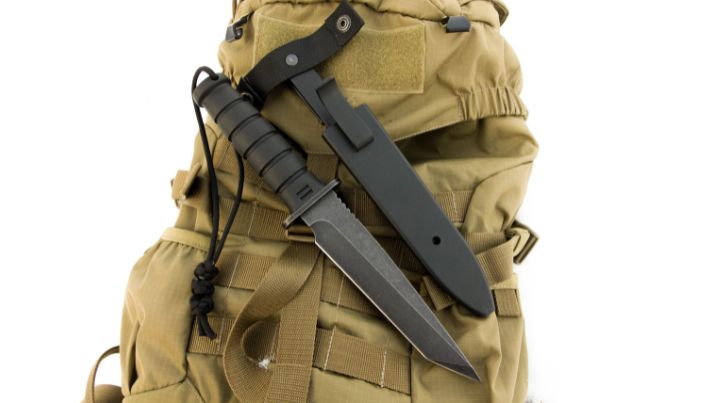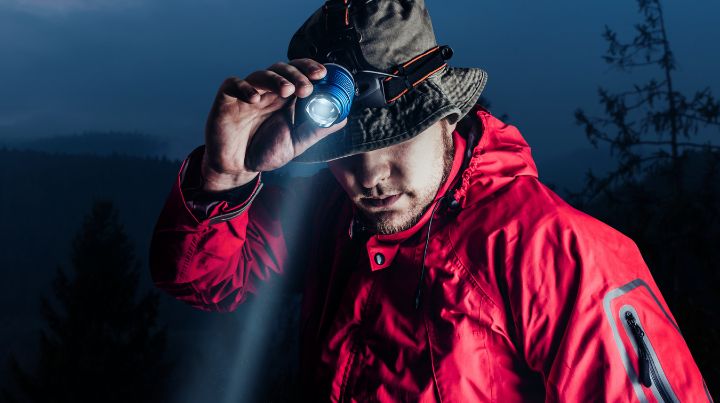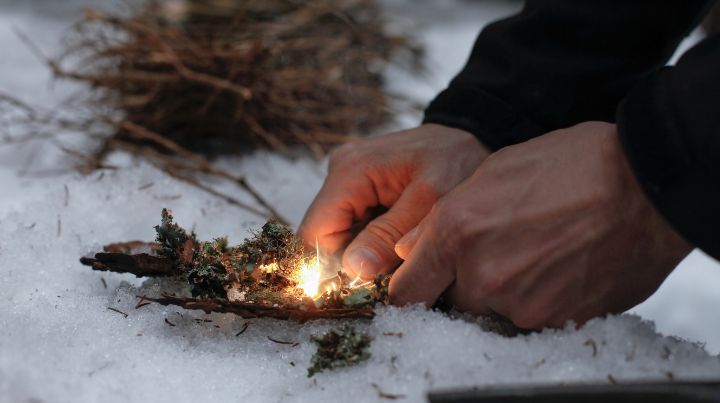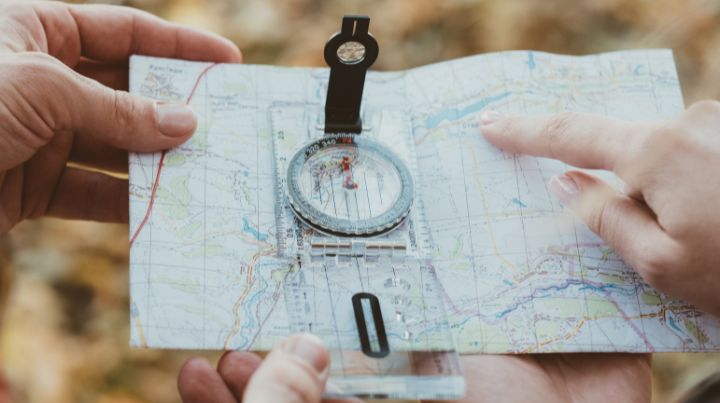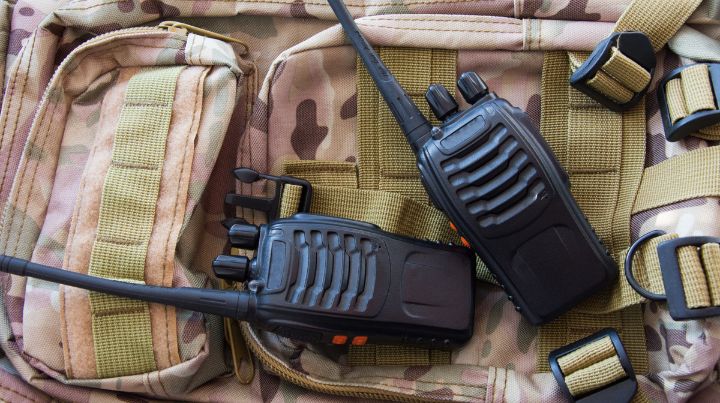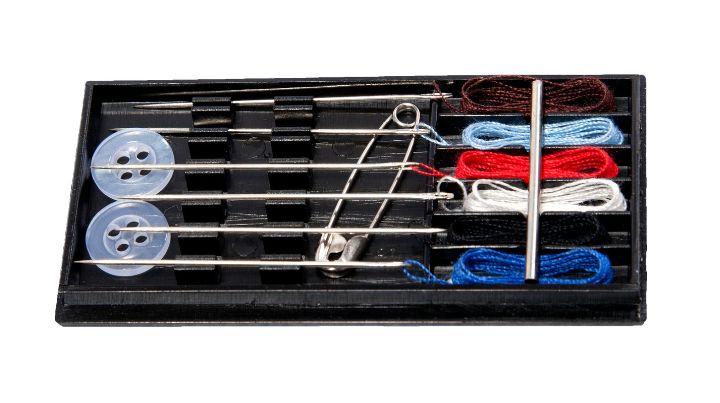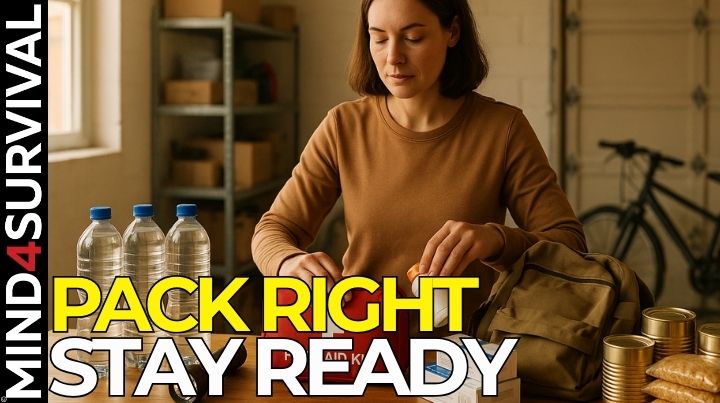10 Best Bug-Out Bag Essentials List & Guide (2023)
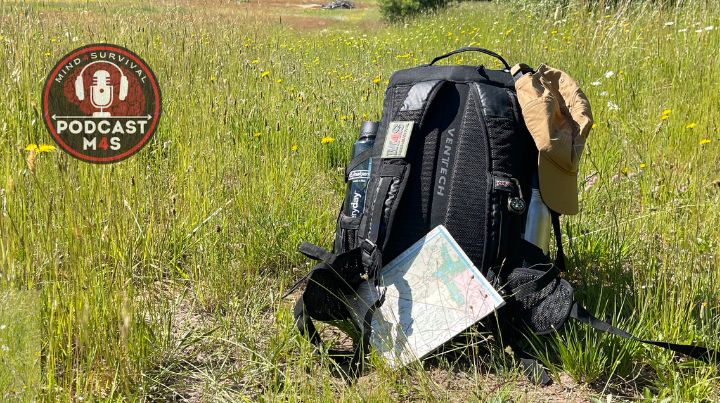

Podcast: Play in new window | Download
When it comes to Bug-Out Bag Essentials, seasoned preppers know that having a survival kit with the right gear can be the difference between life and death in a natural disaster or other survival situation.
In this article, podcast episode, and guide, I'll discuss the ten essential pieces of survival gear you need to include in your bug-out bag.
If you want to be prepared for any eventuality, check it out and follow the link to get your free guide today!
Disclaimer: This article contains affiliate links that I may receive a small commission for at no cost to you if you choose to purchase a product through a link on this page.
What is a Bug-Out Bag (BOB)?
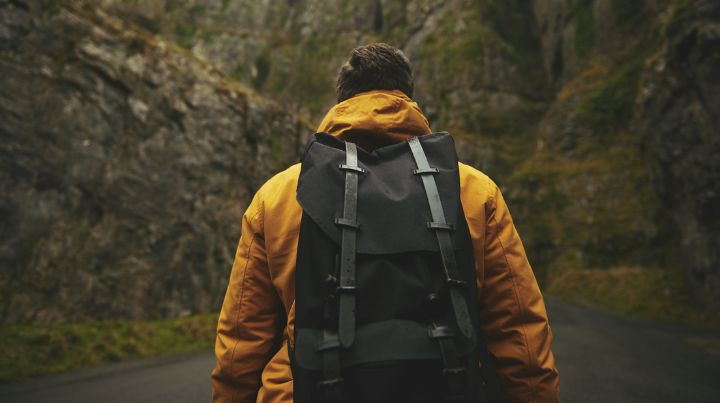
A go-bag, also known as a Bug-Out Bag (BOB), is a portable emergency kit that, if properly planned, should contain everything you need to survive away from home in an emergency.
The contents of a bug-out bag, (go-bag), vary depending on individual needs and should cover the basics dictated by the goals of preparedness and the survival pyramid.
Go-bags are designed to be grab-and-go, so they should be lightweight and easy to carry. Many people keep their go-bags in their car, near the front door, or at their workplace, so they're always prepared in an emergency.
The key to a well-packed bug-out bag is to cover the ten essentials and tailor the remaining contents to your specific needs and situation. Being prepared with an effective go-bag can increase your chances of survival in an emergency situation.
What Items Should Be in a Bug-Out Bag?
Bug-Out Bags and Weight Considerations
When packing a bug-out bag, it's essential to consider the bag's weight and its contents. A bug-out bag is designed to get you from one point to another as rapidly as possible.
Therefore, depending on health, fitness, and practice, you may be able to carry a heavier bag than someone else. However, having unnecessary, extra weight is generally a bad idea. It can slow you down and make it more challenging to navigate rough terrain.
However, it would help if you aimed to keep the weight of your backpack under 10% of your body weight. Anything more than this can strain your back and shoulders, and slow you down in reaching your objective.
If possible, keep your bag light by packing only essential items. This way, you'll be able to move more quickly and easily if you need to bug out in a hurry or cover longer distances.
Then, train to carry that weight, and maybe, over time, you'll be able to carry more than 10% of your body weight.
Bug-Out Bag Checklist and Guide
Here are the ten most essential considerations when packing your bug-out bag.
1. Bug-Out Bag Immediate Action Gear
The first priority in any survival situation is self-defense. Therefore, you should pack whatever defensive tool you are comfortable, competent, and legally allowed to use.
Regarding emergency preparedness, other than firearms, some good options to consider are defensive tools such as pepper spray, tear gas, tasers, and a survival knife.
Personally, a quality survival knife is an excellent option because you can use it in a variety of situations, not just in self-defense.
2. Bug-Out Bag Medical Kit
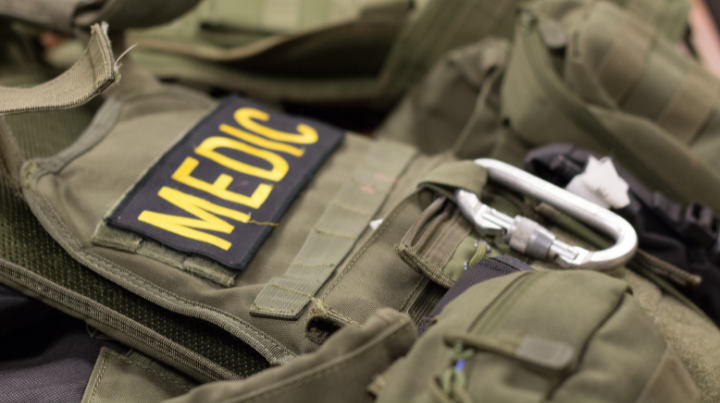
Included within self-defense is the need to be able to manage any immediate and life-threatening medical threats. Immediate and life-threatening medical threats are those problems that can kill a person within minutes.
Regarding your medical kit, it's important to not only think in terms of an apocalyptic situation. After all, the apocalypse hasn't happened in our lifetime, nor has it happened in anyone's lifetime that we know.
I state that because some people don't believe in carrying tourniquets, chest seals, and the like because they believe there won't be any higher-level medical care available to treat a seriously injured person.
That train of thought, in my opinion, is very short-sighted and does not account for the far more likely event of a treatable injury happening in your everyday life, non-apocalyptic life.
Tourniquet
The first life-threatening medical problem a person should be able to address is severe life-threatening bleeding. On average, a 6′ tall, 200-pound male has about 6 quarts (5.7l) of blood (Source). And in the wrong situation, severe bleeding can cause death and incapacitation within a few minutes.
Therefore, a prepared person will have the knowledge and equipment to stop a severe hemorrhage. The ability involves taking an emergency bleeding control course and having a functional, durable, and purpose-built tourniquet or two with you.
Other supplies for treating immediate life-threatening bleeding include pressure dressings, wound packing material, and chest seals, all in alignment with the M.A.R.C.H algorithm of wound care.
In short, if you are or plan on carrying a firearm as a defensive tool, you are by default acknowledging your potential to become involved in a gunfight. Therefore, you are also acknowledging you and your loved ones may be shot and that requires a tourniquet, a chest seal, or both to treat.
So, when it comes to tourniquets, be smart, not lazy.
Cardio Pulmonary Resuscitation
Next, a person without adequate oxygen reaching their brain can suffer irreversible brain damage in under five minutes. Therefore, training in CPR and carrying equipment such as a nasopharyngeal airway is vital to ensure you can help your family and loved ones continue to get oxygen to their brain.
General First Aid Kit
While it doesn't address immediate life threats that can kill within minutes, it does address issues that can kill or incapacitate over a more extended period.
I include medications that help with intestinal and other issues that can shut you down. Likewise, I also have splinting material, slings, etc., to ensure you can keep myself and others going. Here's a great kit you can purchase already assembled and as with any pre-built first-aid kit, is ready for your fine-tuning.
One go-to, multi-purpose option that I like to carry is cotton shemagh. A shemagh is the multi-tool of functional clothing, You can use a shemagh for first aid, protective clothing, shelter, water filtration, and so on. Another great multi-use piece of medical kit that I carry is trauma shears.
Lastly, don't forget to include a pair or two of nitrile disposable gloves to protect yourself from exposure to potential diseases.
3. Bug-Out Bag Protective Clothing
With your immediate survival needs met, it's time to focus on controlling your relationship with the environment.
Controlling the environment starts by addressing the need for protective clothing. As a shorts and flip-flops wearer, I always try to have a set of durable clothes with me. Rugged shoes, pants, shirt, hat, and outer layer of some type.
Our clothes are on us 24/7 and therefore protect us against the day, the night, and everything in between. Therefore, because our clothing passively protects us whether we are engaged with it or not, clothes are our next bug-out bag essential.
The Survival Situation
The reality of any survival situation is that if a tool or resource is not directly attached to you, there is no guarantee that it will be there when you need it. That's why I wrote this article on everyday carry (EDC).
For example, as you're heading off to survive a world gone sideways and walking across the country. Because it's one of the worst cases possible, the weather is terrible, the woods are thick, and every step you take risks a minor cut or worse.
After hours of spot-on, crush every problem that pops up, doing our best Rambo First Blood movie, you stop to take a break, grab a drink, and take a load off.
So, wanting a break, you chill out and drop some of your survival kits.
Your backpack full of survival gear hit the ground, and take off your rain jacket. You then slowly drop down in front of it, using it as a somewhat comfortable backrest. Next, you pull out your water bottle, take a swig, set it down next to you, let out a well-deserved sigh, and relax for 10-seconds.
Then, right as you do, you see your worst nightmare charge out of the woods! A snarling, irate Grizzly bear is barrelling down on you. And, if you believe that you're faster and more deadly than Pistelero Pete and can place a round right in the sweet spot of a charging, 1000-pound, human hunting, Kodiak brown bear of death, we'll go with the Mongolian Horde of Death.
So, 100 hungry, hate what your face, lunatics, wearing powered body armor and carrying never miss laser-guided – kill you right there missiles, riding atop Sigourney Weaver-style Aliens pour out of the woods.
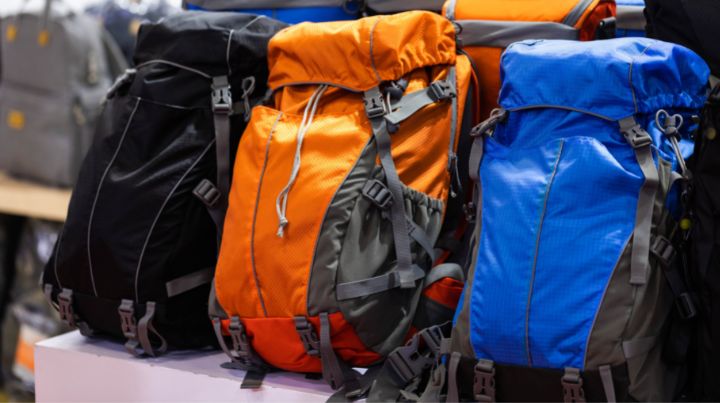
Zero Time
With that, you have zero time to do anything other than survive. And, to do the only sensible thing possible, you save your skin by jumping and running for your life and survive to live another day.
Unfortunately, in saving yourself with only a moment's notice, you had no choice but to leave everything that wasn't attached to you behind. So, gone are your water bottle, your bug-out bag, and your unsoiled pants. All you have left besides your wits and cheetah-like reflexes are what is on and attached to you.
Protective Clothing as Shelter
Protective clothing is crucial, because if properly thought out acts as a shelter. As a shelter protects you from the sun, wind, cold, tree branches, bugs, and just about everything you'd rather not have exposed to the outside world. So too, on a limited basis does clothing protect you from the environment. Protective clothing is your armor against the outside world.
Protective Clothing & Everyday Carry (EDC) While Bugging-Out
You should always address your most immediate survival needs first. However, if sheltering yourself from inclement weather is a significant risk, part of your EDC kit when walking cross-country may be a poncho stuffed in a butt-pack on your belt.
Likewise, I lean towards clothes that provide as much protection from the damaging effects of the environment on my body. That's why I always have durable, long pants, solid boots, a long-sleeved shirt, and a hat with a neck covering ready to go.
At a minimum, as with the versatile shemagh, they offer my human body sun protection. If I'm lucky, they protect against the broken glass, biting insects, smashed concrete, stickers, and thorns that accompany the worst possible survival scenario or natural disaster you are trying to prepare for and avoid.
Pockets and Storage
I prefer always to have cargo pants included in my bug-out set-up. That doesn't mean tactical pants. I said cargo pants, such as the Wrangler Riggs Cargo Workpants.
More specifically, I wear cargo pants and shirts with decent-sized pockets because, when you're on the move, wearing sturdy clothes that provide additional real estate for survival gear is the best way to go.
Pocket Survival Tools
While cargo pockets won't hold a sleeping bag, they will hold a first aid kit, pocket emergency kit, and other survival tools.
For example, when it's legal, I'll stuff a small pepper spray in a pocket as an added measure against both two and four-legged problems. Tasers and stun guns are also an excellent way to help level the playing field with the bad guys. Here's a review article I wrote comparing the 10 Best Tasers for Women
Another valuable bug-out bag checklist item is duct tape. Folded duct tape is a universal repair kit in your pocket. Also, don't forget the old and reliable multi-tool as a backup to your fixed blade knife.
Again, this is about what you have on you if you become separated from your bug-out bag.
Durability
Make sure you find sturdy clothes that are less likely to tear and give out on you.
A Note on the Tacti-cool Kit
Just like I don't believe in spotlighting myself by wearing tactical backpacks, I wear regular cargo pants and steer clear of Cry Precision'ish tactic-cool gear, but you – do you.
Ultimately, go with the best function for you in your most likely scenarios, as opposed to how cool you feel a twenty-something hard-charging SOF guy looks in their clothing.
As crazy as preppers are, there is something to the gray man concept.
4. Bug-Out Bag Lighting
Next, I recommend focusing on what occupies a significant part of the day, and that's the night. The hours of darkness that we must survive in, are ripe with unforeseen risks to our survival and unwanted struggle.
Therefore, as every day, most people, need to be able to turn darkness into light. Being able to see during the hours of darkness is critical to survival. Without light or some type of night vision device, operating in the hours of darkness can be treacherous and put you at a disadvantage.
The fact is, we often need to see to form our situational awareness and perform essential tasks. Therefore, it's crucial to have a source of light available when the situation calls for it.
Being able to see during the hours of darkness is critical to survival. Without light or some type of night vision device, operating in the hours of darkness can be treacherous and put you at a disadvantage.
The fact is, we often need to see to form our situational awareness and perform essential tasks. Therefore, it's crucial to have a source of light available when the situation calls for it.
Glow sticks are an excellent choice for light, as they do not use batteries, have a decent shelf-life, and are easy to use. However, they don't produce much light, so you may want to compliment them with a flashlight or headlamp.
Flashlights are ideal for emergencies because they are bright and allow you to see in the dark. On the other hand, headlamps free up your hands and can be worn around your neck or head.
Whichever type of light you choose, pack extra batteries in your bag so you can keep your lights shining bright when you need them most.
5. Bug-Out Bag Fire Starting Kit
Fire is another way to control your relationship with the environment. Fire, also known as Ranger TV, is an excellent pick-up to morale when they're safe to start.
Likewise, fire is a significant force multiplier when the weather turns bad. It can be the difference between life and death by supplementing body heat in more than one person at a time.
Additionally, having the ability to start and maintain a fire during a natural disaster effectively or another SHTF event is critical to survival. Not only do fires help you retain heat, but they also boil water, signal for help, and provide many beneficial options during emergency scenarios.
Don't forget, while fire provides many beneficial options, it has downsides. One downside is that it can set your world ablaze if precautions aren't taken. Another downside is that it can act as a signal and attractant to anyone in the area.
Regardless, ensure you include the ability to start and maintain fire when you go through your bug-out bag checklist. A lighter, some cotton balls, and a squirt of sanitizer are an excellent start.
6. Bug-Out Bag Shelter
Now, it's time to consider checking your shelter needs off the list of bug-out bag essentials.
When considering your shelter options, I like to go with that thought of something to sleep in, under, and on.
Shelter helps not only protect us from the elements but also protects us from insects and wild animals.
Unfortunately, sleeping bags and tents are not practical for most bug-out bags. One workaround I like to use is to carry a rain poncho on me. I pair that with a poncho liner and cordage, such as SurvivorCord, that I stuff into the nooks and crannies of my ruck. Lastly, I work in a small bivvy sack, or other option as a sleeping pad to keep me off the ground, and I'm as set as I can be for a lightweight, effective, bug-out bag.
Together, those pieces of my shelter and sleeping gear kit can keep a person on the right side of Mother Nature when the weather turns bad. Likewise, they provide various flexible shelter options that can be tailored to your specific circumstances.
7. Bug-Out Bag Water Kit
According to the Survival Pyramid, the subsequent need for your bug-out bag list is the ability to gather, purify, and carry water.
Your water kit should include a reliable water container. I usually look for a container capable of pulling double duty—for example, a single-walled, stainless steel container for boiling and carrying drinking water.
I always find room for a small water filter and water purification tablets to supplement boiling water.
Ultimately, the goal is to keep your hydration pack full and your body hydrated with clean drinking water. That need is not negotiable.

8. Bug-Out Bag Food
Having a bug-out bag packed and ready to go can be a lifesaver in an emergency. But what should you include in your bug-out bag when it comes to food?
The goal of bug-out bag food is to provide you with enough energy to get you to where you're headed. Therefore, when it comes to bug-out bags and food, think of calorie-dense, compact, no-preparation-required food options, such as the great-tasting S.O.S. Emergency Rations.
However, trail mix is an excellent option because it also doesn't require cooking and has a long shelf life. Peanut butter packets are another perfect choice as they are high in protein and can be eaten without a can opener.
Don't forget to pack foods with a longer shelf life, so you don't have to worry about them going bad. Also, make sure you pack a can opener. You never know when you might find a can of food while heading to the hills!
In an emergency, it is essential to plan how you will get to safety.
Because of that, I recommend that you include navigation tools like GPS units, maps, and compasses in your bug-out bag.
Before diving into that, yes, you may also have your smartphone, which can be a crucial part of any survival kit and bug-out bag list. And yes, as long as our cell phone remains powered and in working order, it should be able to help you navigate.
However, if your cell phone is damaged or not working, you will need a backup to know where you are and where you're headed.
GPS units can be beneficial in finding your way to safety, but they require batteries and can be unreliable in some areas. On the other hand, maps and compasses are low-tech tools that can be used even if there is no power or signal available. If you include a map and compass, also consider a protractor, pencils, and a small waterproof notebook for planning your routes and making notes.
Likewise, learning how to read a map and use a compass is essential for anyone who wants to be prepared for an emergency.
10. Bug-Out Bag Communication
Rounding out the top ten is communication. Your need to establish and maintain contact may be critical to your survival.
Your need to receive pertinent and up-to-date information to feed your decision-making process cannot be understated.
Similarly, two-way communication will allow you to make contact with people during your or their time of need.
Don't forget, just as your cell phone is a form of communication, so too is your signal mirror, radio, and so on.
Other Bug-Out Bag Items and Survival Tools to Consider
Every natural disaster and survival situation presents its own unique set of problems.
Therefore, outside of the ten essential items people should carry in their bug-out bag, everyone needs to tailor their survival kit to their wants and needs.
On that note, here are some other considerations for your bug-out bag should you have the room and weight available.
Hygiene Kit
A hygiene kit can be an essential consideration for any bug-out bag. That's because your ability to stay clean is necessary to your performance, safety, and health. Some other items to consider for your hygiene kit are toilet paper, soap, shampoo, and a toothbrush. However, those are nice to have items, all of which can be supplemented by naturally occurring options. Whether you know what those naturally occurring options are is a different problem.
Important Documents
Carrying essential documents can be a vital consideration for your bug-out bag. Important documents include your driver's license, passport, birth certificate, and insurance information. If you have time, make copies of these documents and store them in a waterproof container such as a ziplock bag.
Sewing Kit
Some people like carrying a small sewing kit for when disaster strikes. A sewing kit allows you to keep your clothes and other items such as a sleeping bag or tent serviceable and operating at peak effectiveness.
Solar Charger
If you are carrying electronics, also carrying a solar charger to your emergency kit may be a good idea to keep your gear operational and ready to go. Unfortunately, most solar charges are on the heavy side. So, consider a solar charger as an alternate, nice-to-have item if you have the. weight and space available.
Gas Mask
Some people plan on carrying a gas mask. While this may sound great, a gas mask takes up a lot of room and probably isn't applicable to most bug-out bags.
However, as hazardous materials incidents, the dust in the air on 9/11, and forest fires have shown, the ability to breathe clean and safe air is crucial to some disaster preparedness situations. Therefore, in lieu of a gas mask, consider a dust mask if not an N95 or higher mask, if you find yourself in a situation where filtering the air you breathe is essential.
Money
If you have the means, consider carrying cash in your bug-out bag. You never know when you might need it. If you pack cash, separate the small bills from the rest of your money to avoid someone seeing how much money you truly have. And to those who say currency will be worthless, it won't be as long as you need toilet paper or a fire starter.
The Goals of Preparedness
Your bug-out bag should be planned and packed so that it is a force multiplier in assisting you in meeting the goals of preparedness. The three goals of preparedness are survival, minimizing unwanted struggle, and living your best life.
1. Survival
The first goal of preparedness is to survive. After all, if we don't survive, that's it in this life, and it's time to skip ahead and confront the great unknown.
2. Minimize Unwanted Struggle
There are two types of struggle in life – wanted struggle and unwanted struggle.
Our wanted struggle is the struggle we willingly accept, such as having a family, going to school, exercising, eating well, and preparing for future unwanted struggles.
On the other hand, our unwanted struggle is the struggle that we would rather avoid. Unwanted struggle includes illness, being the victim of crime, an unexpected job loss, etc.
In the end, while we can learn from all our struggles, minimizing the unwanted struggles sets up to achieve the third goal of preparedness.
3. Live Your Best Life
Surviving sets us up to be in a position to minimize our unwanted struggles. Likewise, minimizing our unwanted struggles gives us a better chance to live our best life possible.
With that, living our best life is, in my opinion, the ultimate goal of preparedness. After all, what's the point of surviving and minimizing our unwanted struggle if it's not to live our best lives possible?
The Survival Pyramid

My Survival Pyramid provides an essential, needs-based hierarchy for achieving the goals of preparedness.
In other words, the Survival Pyramid provides a structure for understanding what needs should be addressed and in what order your needs should be addressed.
For example, the survival pyramid teaches that you must be aware of a problem (1/3 of a second without situational awareness) before you can do anything about the situation.
Similarly, your need to deal with a rapidly evolving threat in less than three seconds through self-defense takes precedence over your need for a first aid kit, a sleeping bag, or a water filter.
The Bottom Line on Bug-Out Bag Essentials
A bug-out bag is a must for anyone who wants to be prepared for an emergency. The ten essentials in this bug-out bag list are essential items you should include in your bug-out bag or survival kit.
With that, it's always important to consider that in the end, every bug-out bag should be crafted and packed to meet each person and group's individual disaster needs.
What are your thoughts on what to pack in bug-out bags? Tell us in the comments below!
Additional Resources:
- Best Fixed Blade Knives Review and Guide
- FREE Bug Out Bag Essentials Guide!
- What Should You Keep in Your Trauma Medical Kit?
- Here's What You Should Carry in Your Get-Home Bag
Stay safe,
Related Articles
FREE Guide
Read the Best Seller
Join Mind4Survival
Stay informed by joining the Mind4Survival! 100% Secure! 0% Spam!
Affiliate Disclosure...
Mind4Survival is a free, reader supported information resource. If you make a purchase through our link, we may, at no cost to your, receive an affiliate commission.
Do You Want To Be Ready No Matter What?

Download our free 39-page guide with interactive, 7-Day Emergency Kit Checklist and take the first step toward real preparedness.
- Know exactly where to start.
- Save time and money.
- How-to build a complete Basic Emergency Kit.
- Level up your safety and security.
Join Mind4Survival
Stay informed by joining the Mind4Survival! 100% Secure! 0% Spam!


